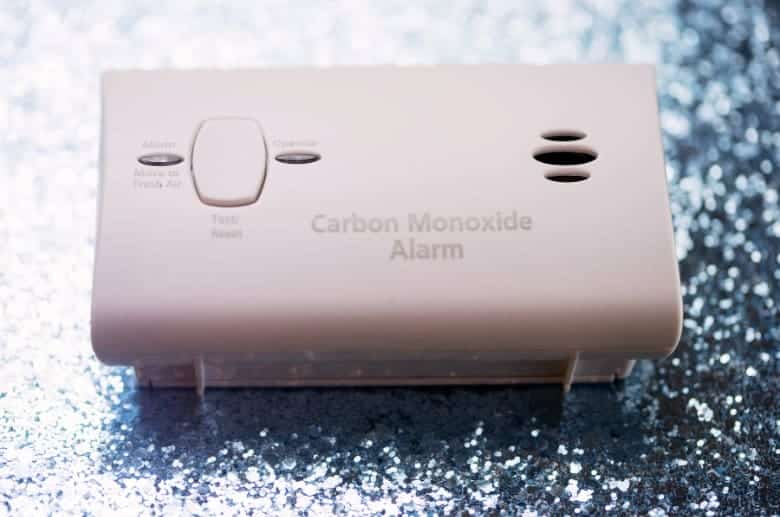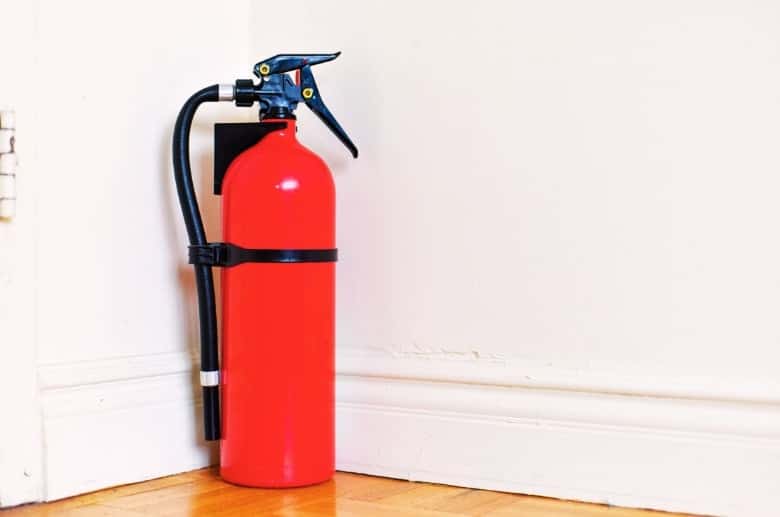Wood-burning stoves are a popular choice for many homes in the US. In fact, the U.S. Energy Information Administration estimated that up to 12.5 million households had wood-burning stoves in 2018!
But before you jump on the bandwagon, there are some pros and cons to having a stove in your basement that you should consider. This will help ensure your safety and maximize the stove’s benefits.
This article explores the pros and cons of having a basement stove, providing valuable insights to help you decide about home heating. We also discuss installing a wood stove in basement and maintenance tips to ensure it serves you better and longer.
Types of Stoves Suitable for Basement Installation
Unique features and installation requirements of different stoves significantly affect the heating effectiveness of your basement fireplace. That said, here are the most common wood stoves you can install in your basement.
Wood-Burning Stove

A wood-burning stove is a traditional and versatile option for basement heating. It operates by burning seasoned firewood or logs to produce heat. These stoves typically feature a combustion chamber, air controls, and a chimney or flue system.
To maintain a wood stove properly, you need to perform regular maintenance tasks such as cleaning out ash and ensuring adequate ventilation.
Log Burner

Like wood-burning stoves, log burners use logs or firewood as fuel. These stoves are designed to burn larger pieces of wood and often have a larger firebox than traditional wood-burning stoves.
Log burners are known for their high heat output and longer burn times. They can heat larger basement spaces effectively, but proper ventilation and clearances must be maintained to ensure safety.
Pellet Stove

When comparing pellet and wood stoves, Pellet stoves are a more modern and efficient option for basement heating. These stoves utilize small wood pellets from compressed sawdust or other biomass materials. They feature a hopper that automatically feeds the pellets into the combustion chamber, controlled by a thermostat or timer.
Additionally, pellet stoves offer convenient operation, adjustable heat settings and can be programmed for automatic ignition and shutdown. The stoves produce consistent and clean-burning heat and require minimal ash cleanup.
However, pellet stoves use electricity to power the pellet feeding mechanism and fans. Having a backup power source may be necessary during power outages.
——
Do You Need to Hire Chimney & Fireplace Expert?
Get free quotes from qualified experts near you. No commitment required!
——
Wood-Burning Stove vs Log Burner vs Pellet Stove: In-depth Comparison
Several factors come into play when comparing wood stoves. Such factors include efficiency, size of the wood burnt, and operational convenience. Let’s see how the three options compare when considering these factors.
| Type of Stove | Efficiency | Firebox Size | Ease of Use |
| Wood-Burning Stove | Wood-burning stoves have an average efficiency of 60% to 85% and lose heat through the chimney. | Depending on the basement size, brand, or user preference, it can vary. | It needs regular ash cleaning and maintenance for optimal operation. |
| Log Burner | Log-burning stoves offer efficiencies ranging from 70% to 80%, making them more efficient than traditional wood-burning stoves. | Log burners have larger fireboxes, enabling them to burn larger pieces of wood, resulting in extended fire life and improved heat retention. | They may require more clearance space due to their larger fireboxes. |
| Pellet Stove | Pellet stoves can achieve efficiencies ranging from 70% to 90% or even higher, making them one of the most efficient options for wood-burning appliances. | Varies depending on user preference, basement size, and brand. | Pellet stoves come with adjustable heat settings and programmable operation, making them more convenient. |
Pros and Cons of Wood Stove in Basement
Like every other heating system installed in basements, wood stoves have their fair share of advantages and disadvantages. Let’s look at the most common ones below.
Pros of Wood Stove in Basement
Here are the advantages of using a wood stove in the basement:
- Efficient Heating: Properly insulated basements can effectively warm the entire house with a wood stove. The stove’s radiant heat has an efficiency rate of about 75% and can penetrate floors and walls, providing consistent and comfortable temperatures throughout the living spaces.
- Cost-effectiveness: The cost to install a wood stove typically falls between $3,000 to $3,500, while labor expenses range from $250 to $800. However, wood is often less expensive than other fuel sources, like natural gas, propane, or electricity.
- Aesthetic Appeal and Versatility: Wood-burning stoves add a charming and cozy atmosphere to the basement and home. They offer a visual focal point and can enhance the ambiance with their warm glow and flickering flames. They’re also available in various sizes, styles, and designs, allowing you to select a stove that matches your aesthetic preferences and complements the overall decor of the basement.
- Energy Independence: The ability to function independently (without relying on electricity and gas) is a significant advantage of having a wood stove in your basement. During power outages or emergencies, when other heating systems may be rendered useless, you can still count on a wood stove to provide a reliable heat supply in your home.
- Durability: It is possible for a wood-burning stove of good quality to last between 10 to 20 years, which makes it a great investment for the long term! Most wood stoves are constructed from high-quality materials, like cast iron or steel, which can withstand the intense heat generated during combustion.
Cons of Wood Stove in Basement
Now, let’s look at the disadvantages of installing a wood stove in your basement:
- Ventilation and Draft Issues: Basements often have limited airflow and oxygen supply, which may restrict combustion. This leads to inefficient burning and the production of more smoke and pollutants, including the danger of carbon monoxide poisoning, which can pose serious health risks if accumulated in high concentrations. Insufficient air circulation can also result in a buildup of stale air and moisture, leading to potential mold or mildew issues. Considering these ventilation concerns, opting for an electric fireplace in basement settings might be a viable alternative. Unlike wood stoves, electric fireplaces don’t require combustion, thus eliminating issues associated with limited airflow and oxygen.
- Smoke Leakage: Poorly installed or improperly sealed wood stoves can leak smoke into the basement and the rest of the house. This can lead to unpleasant odors, soot accumulation on surfaces, and potential health concerns from inhaling smoke particles.
- Heat Loss Concerns: Most wood stoves only use approximately 80% of the heat generated from combustion to heat the home directly. The remaining 20% is lost in the chimney due to several factors, like heat transfer to the chimney walls, the escape of hot gases, and natural air convection.
- Installation Challenges: Installing a wood stove in the basement can be complex. Proper installation requires adherence to local building codes, including clearance requirements and safety regulations. It may also involve complex tasks, such as installing a chimney or flue system and ensuring a proper connection between the stove and the ventilation system.
- Safety Risks: The high temperatures reached by the stove and the potential for accidental contact with hot surfaces can lead to burns or injuries. There is also a risk of fire if combustible materials are placed too close to the stove or if the stove is left unattended.
- Maintenance: Regular maintenance ensures your wood stove’s safe and efficient operation. This includes cleaning the stove, removing ash buildup, and inspecting and maintaining the chimney or flue system. Failure to perform regular maintenance tasks can result in reduced efficiency, increased risk of chimney fires, and potential damage to the stove.
- Creosote Buildup: The combustion of wood produces creosote, a highly flammable substance that accumulates on the inner walls of the chimney or flue system over time. This buildup can pose a significant fire hazard if not cleaned and removed regularly.
How to Install a Wood-Burning Stove In a Basement?

Although installing a wood-burning stove in a basement can be rewarding, it’s crucial to approach the installation process with caution. We also recommend consulting and hiring a professional for the installation due to the technical aspects involved. Below is an overview of the installation process:
Pre-Installation Considerations
This involves critical decision-making and preparation that can significantly impact the safety and functionality of the stove system. Here are key pre-installation factors:
- Safety Considerations for Basement Wood Stove Installation: Installing a wood-burning stove in a basement involves dealing with combustible materials, high temperatures, and potential fire hazards. Carefully assess your basement’s layout, structure, and ventilation options to ensure the safe operation of the stove.
- Assess the Space and Location: Evaluate the available space in your basement and choose an appropriate location for the wood stove. Check for the best spot with an easier route to construct a vent pipe if your home doesn’t have an existing chimney. Also, consider the clearances required by the manufacturer and local building codes to ensure proper spacing between the stove, nearby combustible materials, and the surrounding walls.
- Understand Building Codes and Regulations: Familiarize yourself with the building codes and regulations specific to your locality. Different areas have specific requirements for wood stove installations, like clearances from combustible materials, chimney height, and ventilation provisions. Adhering to these regulations ensures compliance and safety.
- Evaluate the Ventilation System: Since basements often have limited airflow, proper ventilation is crucial for your wood stove installation. Assess the existing ventilation system and determine if additional vents or a dedicated chimney are required to provide sufficient air circulation for combustion and safely remove smoke and fumes.
- Consider the Type and Size of the Stove: Select a wood-burning stove suitable for your basement’s size and heating requirements. Ensure the stove’s heat output aligns with the space you intend to heat. Proper sizing ensures optimal efficiency and prevents over or under-heating the area.
——
Do You Need to Hire Chimney & Fireplace Expert?
Get free quotes from qualified experts near you. No commitment required!
——
Wood-Burning Stove Installation Process
When installing a wood-burning stove in a basement, it is essential to follow a systematic approach to ensure a safe and effective installation. But first, here are the tools you’ll require for the job:
- Tape measure and level
- Drill and appropriate drill bits
- Chimney pipe and connectors
- Stovepipe and fittings
- Fireproof materials for floor and wall protection
- Wrenches and screwdrivers
- Heat-resistant sealant
- Ventilation components
Step-by-Step Guide
For this part, we highly recommend a professional to be around. An expert will guarantee your safety and ensure the installation is done correctly. Also, ensure you wear your protective clothing before proceeding with the job. Now, let’s dive into the steps involved:
Step 1. Prepare the space
Clear the area you plan to install the wood stove, ensuring proper clearances from combustible materials as specified by the manufacturer and local building codes.
Step 2. Install floor and wall protection
Use fireproof materials, like a non-combustible hearth pad, to create a safe foundation for the wood stove. Install fireproof wall shields or heat-resistant materials on nearby walls as necessary.
Step 3. Position the wood stove
Carefully position the stove in the designated area, ensuring that it aligns with the required clearances and is level. This will guarantee proper functionality and safety when using the stove.
Step 4. Connect the stovepipe
Attach the stovepipe to the wood stove’s flue collar, following the manufacturer’s instructions. Ensure a secure and airtight connection using appropriate fittings and sealant.
Step 5. Install the chimney system
If a dedicated chimney is required, assemble and install the components according to the manufacturer’s guidelines. Ensure proper clearances, secure connections, and proper alignment with the wood stove.
Step 6. Connect ventilation components (if necessary)
To ensure sufficient air circulation for combustion and exhaust, install vents or ductwork if additional ventilation is needed. This will help maintain proper airflow and enhance the overall ventilation system.
Step 7. Secure all connections
Double-check and tighten all connections to ensure no leaks or gaps could compromise the system’s safety and efficiency. This step is crucial to maintain the integrity and performance of the system.
Step 8. Test the system
Before using the wood stove, perform a thorough test to ensure proper functioning. Check for any signs of smoke leakage, monitor the draft, and verify that the wood stove produces adequate heat.
Importance of Professional Help For Wood Stove Installation
Installing a wood stove in your basement often requires the expertise of a professional. Several common reasons include:
- Compliance with building codes: Professionals are well-versed in local building codes and regulations, ensuring that the wood stove installation meets all requirements. Ensure you select a certified professional from a reputable company with years of experience.
- Proper sizing and placement: An expert can assess the space and recommend the appropriate size and placement of the wood stove to maximize efficiency and safety.
- Ensuring proper ventilation: With the help of professionals, you can easily evaluate the existing ventilation system and determine if additional measures are needed for adequate airflow and safe exhaust.
- Expertise in installation techniques: Skilled personnel have the knowledge and experience to execute the installation correctly, minimizing the risk of errors and ensuring a secure and efficient wood stove setup.
——
Do You Need to Hire Chimney & Fireplace Expert?
Get free quotes from qualified experts near you. No commitment required!
——
Safety Precautions to Take When Installing Wood Stove in Basement
Security is paramount, regardless of the project. The following are some safety precautions to adhere to when installing a wood stove in basement, according to Insurance Information Institute:
1. Carbon Monoxide (CO) Detection: Install carbon monoxide detectors on every level of your home, including the basement. Place them near the wood stove and sleeping areas. Test the detectors regularly and replace the batteries as needed.

2. Fire extinguisher: Keep a fire extinguisher nearby in case of emergencies, ensuring it is appropriate for use on wood and other common household fires.

3. Clearances of combustible materials: Maintain proper clearances between the wood stove, flue pipes, and nearby combustible materials to prevent fire hazards.
4. Regular maintenance and inspections: Schedule regular maintenance and inspections of the wood stove, chimney, and venting system to ensure proper functioning and minimize safety risks.
Maintenance Tips for Basement Wood Stove
Properly maintaining your basement wood stove is crucial for extending its lifespan and ensuring efficient operation. Follow these guidelines to ensure you perform the necessary steps correctly.
- Regular Cleaning: Clean your wood stove regularly to remove ash, soot, and creosote buildup. Use a brush and ash vacuum to clean the firebox, stovepipe, and chimney. Cleaning prevents blockages, improves airflow, and reduces the risk of chimney fires.
- Annual Inspection: Schedule an annual inspection by a professional chimney sweep or wood stove technician. They will assess the condition of your wood stove, chimney, and stovepipe, checking for any damage, leaks, or other issues that may affect its performance.
- Replace Gaskets and Seals: Check and replace worn-out gaskets and seals around the stove door, stovepipe joints, and other connections. This ensures a tight seal, prevents air leakage, and maximizes the stove’s efficiency.
- Practice Safe Operation: Follow safe operating practices, such as using a fireplace screen or glass door to prevent sparks from escaping, using proper fire-starting techniques, and never leaving the wood stove unattended while it’s in use.
- Use Quality Fuel: Burn well-seasoned hardwoods that have been properly dried for at least six months. Avoid burning wet or green wood, as it produces more smoke and increases creosote buildup.
Conclusion
Careful planning and adherence to safety measures are crucial when installing a wood stove in basement. This type of installation offers benefits such as efficient heating, cost-effectiveness, and aesthetic appeal.
It is important to consider factors like ventilation, clearances, and maintenance requirements to ensure the safe and optimal operation of the wood stove.
If you’re considering installing a wood stove in your basement, consult professional installation services or chimney sweep to ensure a safe and efficient operation.






